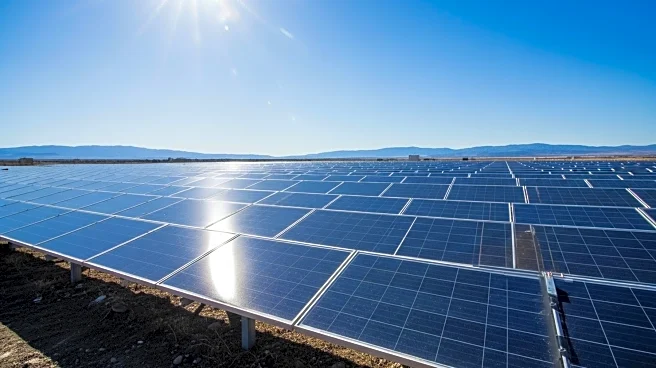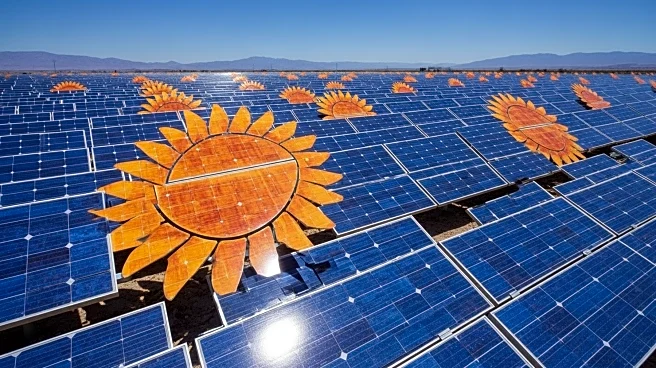What's Happening?
Wind and solar power are projected to meet over 80% of the increase in global electricity demand by 2035, with China leading the expansion. According to BP's Energy Outlook 2025, solar generation is growing more rapidly than wind power due to faster declines in costs, shorter deployment timelines, and greater policy support. This shift necessitates enhanced resilience in power systems, including increased flexible generation, energy storage, demand-side responsiveness, advanced grid technologies, and improved interconnections. The report also highlights a steady growth in hydropower and nuclear generation, while geothermal remains a minor contributor. Coal power's share is expected to decrease significantly, driven by reduced coal use in China, whereas natural gas-powered generation will rise by 30%, with a third of this increase occurring in the U.S.
Why It's Important?
The transition to wind and solar power represents a significant shift in global energy dynamics, with implications for energy policy, economic growth, and environmental sustainability. As China leads this transition, it underscores the country's role as a major player in the global energy market. The decline in coal usage and the rise in natural gas generation reflect broader trends towards cleaner energy sources, impacting industries reliant on fossil fuels. For the U.S., the increase in natural gas generation could bolster domestic energy production and reduce reliance on coal, aligning with environmental goals. This shift also presents opportunities for technological innovation and investment in renewable energy infrastructure, potentially driving economic growth and job creation in the sector.
What's Next?
The continued expansion of wind and solar power will likely prompt further investments in grid technologies and energy storage solutions to accommodate the increased generation from variable sources. Policymakers may need to address regulatory and infrastructure challenges to support this transition, including incentives for renewable energy projects and measures to enhance grid resilience. As countries like China and the U.S. advance their renewable energy agendas, international cooperation and technology sharing could play a crucial role in achieving global energy goals. Additionally, the shift away from coal and towards cleaner energy sources may influence geopolitical dynamics, as countries adjust their energy strategies to align with environmental commitments.
Beyond the Headlines
The move towards renewable energy sources like wind and solar power raises ethical and cultural considerations, particularly in regions where coal and fossil fuels have historically been dominant. The transition may affect communities reliant on traditional energy industries, necessitating strategies for economic diversification and workforce retraining. Furthermore, the global push for cleaner energy aligns with efforts to combat climate change, highlighting the importance of sustainable development and environmental stewardship. As countries navigate this transition, balancing economic growth with environmental responsibility will be crucial in shaping the future of global energy policy.











